This article dives into how behavioral momentum in Applied Behavior Analysis (ABA) therapy can really boost skill acquisition and overall success for individuals with autism. 🌟 It highlights that when sessions kick off with simple, high-probability tasks, it helps build confidence and engagement. This leads to better compliance and readiness for tackling more complex challenges. Research backs this up, showing significant increases in engagement rates when these strategies are put into action. So, let’s explore this together and see how it can make a difference!
Understanding the intricacies of ABA therapy can feel overwhelming for many parents. But here’s a bright spot: the concept of behavioral momentum offers a promising pathway to enhance skill acquisition for children with autism! 🌟 By starting sessions with simple, high-probability tasks, therapists create an atmosphere of success that boosts engagement and builds confidence for tackling more complex challenges.
Now, you might wonder, how can caregivers effectively implement these strategies at home? It’s all about ensuring consistency and maximizing your child's progress. Exploring the nuances of behavioral momentum reveals both the potential benefits and the challenges of keeping this engaging approach alive throughout therapy. Let’s explore this together!
At Rori Care, we understand that navigating ABA therapy can feel overwhelming for parents. That’s why we strategically utilize a behavioral momentum ABA example to help individuals with autism acquire new skills effectively. Our qualified behavior analysts create personalized plans filled with measurable objectives and evidence-based strategies. We kick off each session with simple, high-probability activities—like asking a child to 'clap your hands'—to set a positive tone that encourages engagement and success. This approach not only boosts children's confidence but also lays a solid foundation for tackling more complex skills, making learning feel smoother.
Imagine starting a session with an easy task that your child can accomplish. This method serves as a behavioral momentum ABA example, effectively building momentum and significantly increasing engagement rates during each session. Studies even show that tasks reinforced through these high-probability activities help children stay focused and motivated. As your child experiences success with easier tasks, they become more willing to take on bigger challenges, leading to wonderful outcomes in their overall development.
Did you know that 92% of Board Certified Behavior Analysts utilize a behavioral momentum ABA example in their practice? This statistic highlights just how effective this approach can be! To keep that momentum going, booster sessions and regular practice are key. And let’s not forget parental involvement—it’s essential! When caregivers are familiar with ABA principles, they can provide the right support at home, enhancing the professional interventions and creating consistency.
This active participation empowers you as caregivers and results in better behavioral outcomes, ensuring that your child continues to thrive beyond therapy sessions. Continuous assessment and adjustments to personalized plans are vital to this process, making sure that strategies remain responsive to your child's changing needs. So, let’s explore this journey together! We’re here to help you every step of the way!
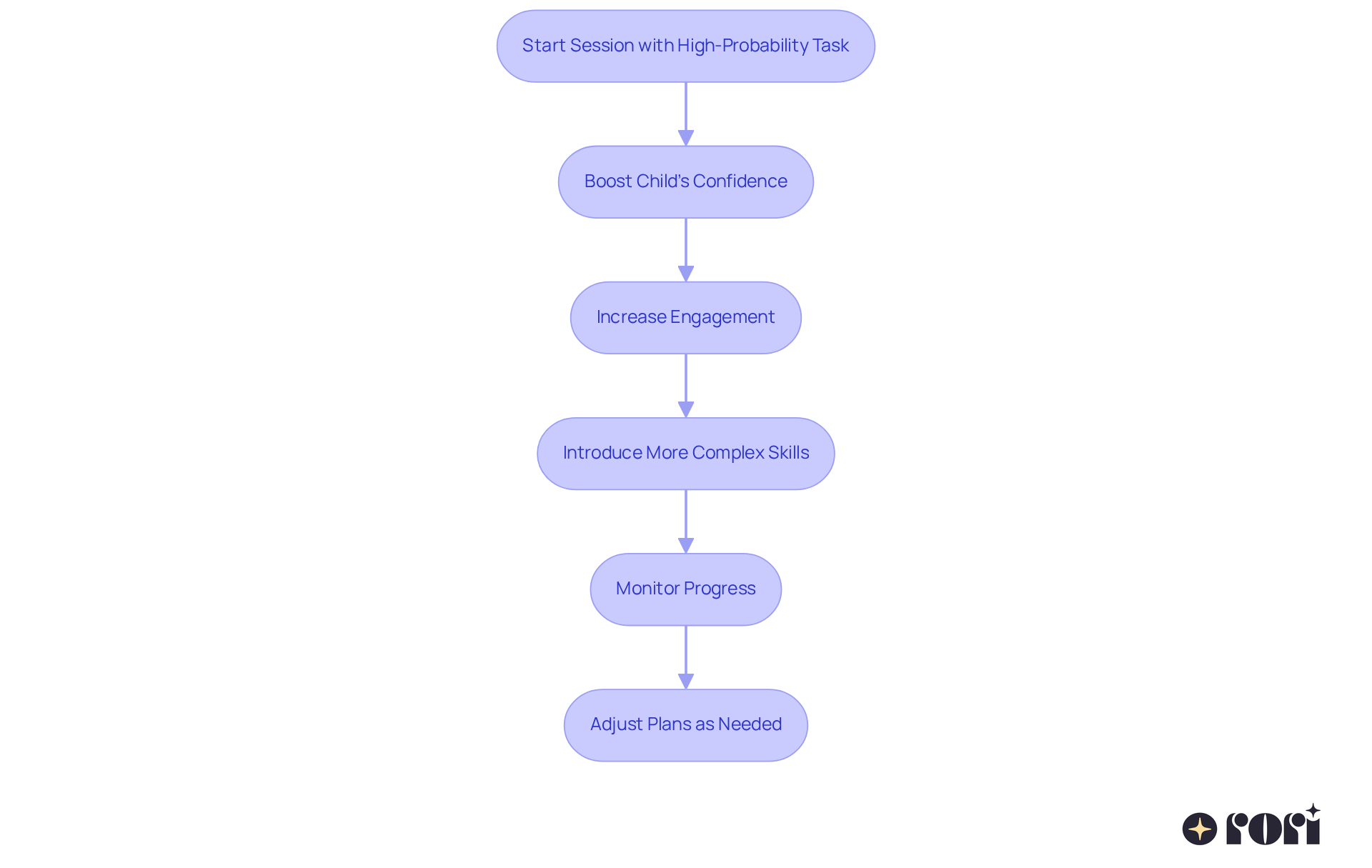
High-probability request sequences can be a game changer! They involve presenting a series of simple activities, which is a behavioral momentum ABA example, that a young person is likely to accomplish before introducing something a bit more challenging. For instance, a therapist might start by asking a young person to 'touch your nose,' 'clap your hands,' and 'give me five' before moving on to 'put on your shoes.' This friendly approach not only boosts adherence but also significantly enhances the young person's involvement by fostering a sense of achievement and readiness for more advanced tasks.
Research shows that incorporating high-probability tasks, a behavioral momentum ABA example, can lead to better engagement levels. Studies have demonstrated a notable increase in adherence among individuals with autism spectrum disorder (ASD) when employing a behavioral momentum ABA example, where relevant tasks are presented before less likely requests. Clinicians have seen firsthand how this strategic sequencing can effectively motivate young individuals, making them more open to challenges and enriching their overall therapy experience.
A qualified behavior analyst crafts these personalized plans, weaving in measurable objectives and evidence-based strategies to ensure they meet each individual's needs. Plus, they continuously evaluate and adjust as necessary. One case study highlighted the power of guided compliance procedures, showing that four out of six preschoolers made significant strides in adherence when high-probability activities were included.
Moreover, equipping caregivers with ABA principles and strategies enhances their ability to support their children's behavioral goals. This not only leads to better outcomes but also reduces stress within the family dynamic. So, let’s explore this together and see how these strategies can make a difference in your child's journey!

Sequential task presentation is all about organizing activities in a way that makes sense, building on each step as we go. For example, when teaching a young person to wash their hands, a therapist might start by showing them how to turn on the faucet. Next, they’d apply soap, scrub their hands, and finally rinse. This step-by-step approach not only clarifies what’s expected but also helps the learner really master each part before moving on to the next.
By using adaptive treatment plans that fit each individual's unique needs, therapists can make sure each step is effective and responsive to how the person is doing. And let’s not forget the vital role of caregivers! Their active participation creates a collaborative environment that enhances the learning experience for the young one. With personalized support and clear tracking of progress, caregivers can easily see improvements and tweak strategies as needed. This ultimately leads to lasting positive changes in the child's behavior and skills. Let’s explore this together!
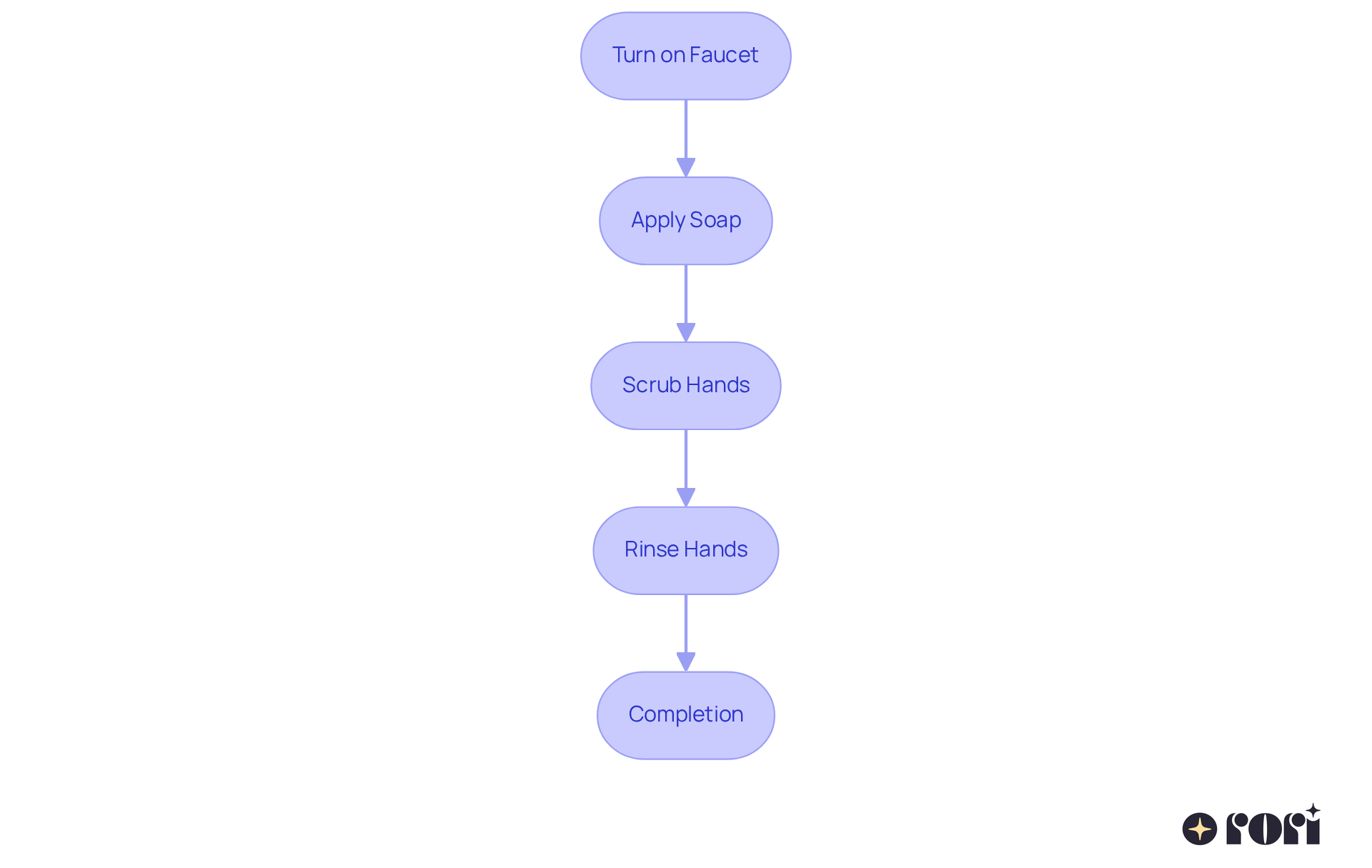
Resistance to change can be a real hurdle in ABA therapy, but using a behavioral momentum ABA example can provide effective strategies to keep things moving smoothly. Therapists often use choices, visual supports, and gradually increase task difficulty to help with transitions. For example, in a behavioral momentum ABA example, if a little one is hesitant to transition from playtime to a structured activity, a therapist might first let them choose a favorite toy to bring along. This simple choice not only makes the transition easier but also keeps the child engaged in the process.
Research shows that a behavioral momentum ABA example, where behaviors are reinforced regularly during high-probability request sequences, is more likely to stick, boosting compliance and engagement. By starting with simpler tasks that the child is likely to succeed in, therapists can create a pattern of achievement, serving as a behavioral momentum ABA example, that motivates them to tackle more challenging tasks later on. Caregiver education is crucial here, as it gives parents the tools they need to support their child’s progress effectively.
In various case studies, the consistent use of these strategies, as highlighted in a behavioral momentum ABA example, has shown that children who experience gradual transitions and receive timely positive reinforcement are more likely to stay engaged during therapy sessions. As one therapist noted, 'Establishing a positive flow by beginning with familiar tasks helps children feel secure and ready to face new challenges.' This highlights the importance of prompt reinforcement in maintaining progress and serves as a behavioral momentum ABA example of how informed decisions by caregivers can further enhance these outcomes.
Overall, keeping progress in autism therapy on track requires thoughtful planning and the use of effective strategies tailored to each child's unique needs. This way, they can remain motivated and engaged throughout their therapeutic journey. Empowered caregivers, equipped with their knowledge of ABA principles, can make a big difference by creating supportive environments that facilitate smoother transitions and boost engagement. Let’s explore this together!
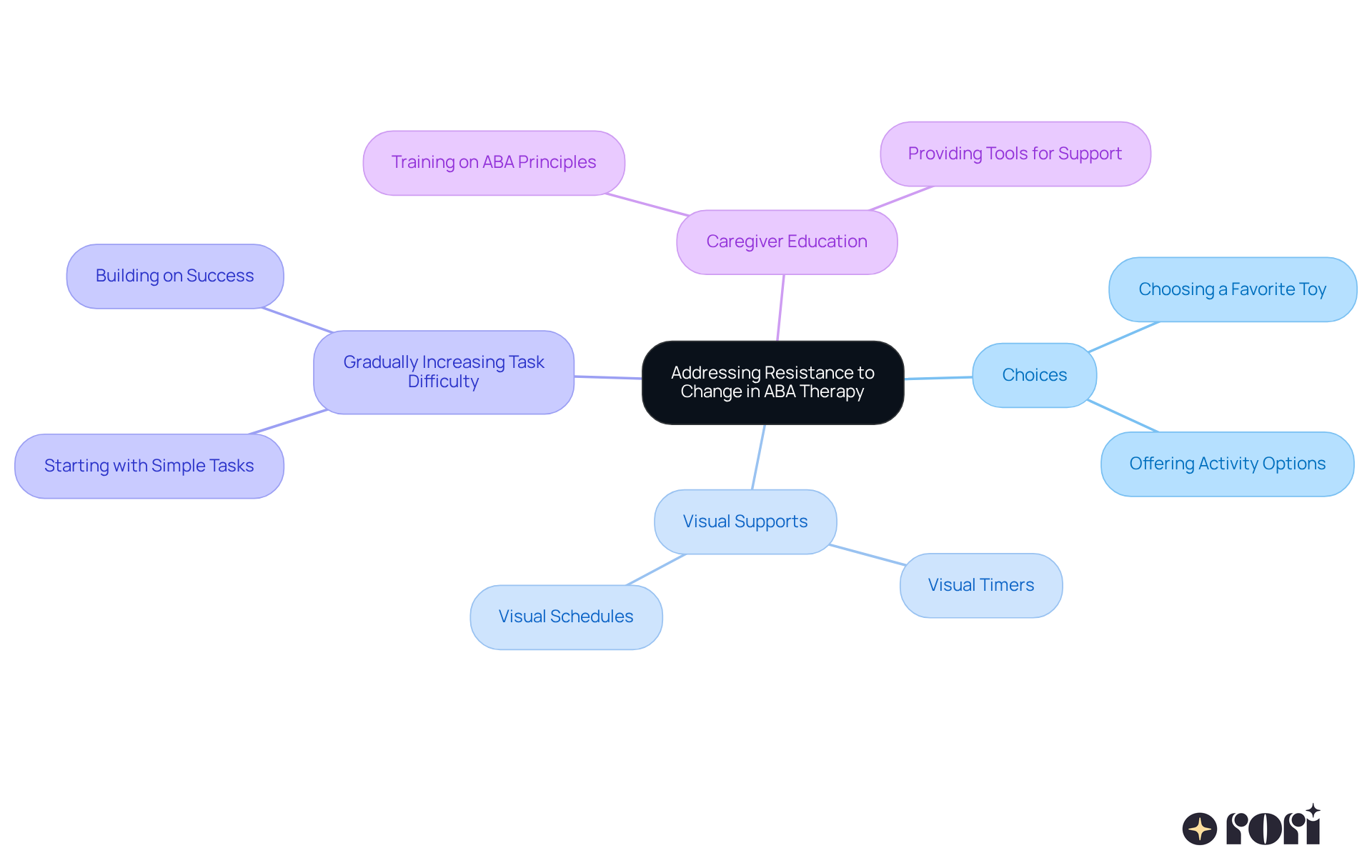
The benefits of behavioral momentum ABA example are truly remarkable, especially when caregivers embrace ABA principles and strategies. This approach not only boosts learning by increasing the chances of completing tasks but also helps reduce frustration by breaking things down into manageable steps. Plus, it creates a positive learning environment, serving as a behavioral momentum ABA example! 😊
When caregivers understand these principles, they can provide better support for their children at home. This complements professional interventions and promotes consistency, which is so important. This understanding empowers caregivers, easing their stress and improving family dynamics.
A behavioral momentum ABA example can be seen in how children tend to engage more when they experience early successes. This can lead to better behavior and skill development over time, illustrating a behavioral momentum ABA example. And guess what? This method also helps build resilience! Kids learn to tackle tougher challenges with confidence, supported by caregivers who make informed choices that positively influence their growth. Let’s explore this together!
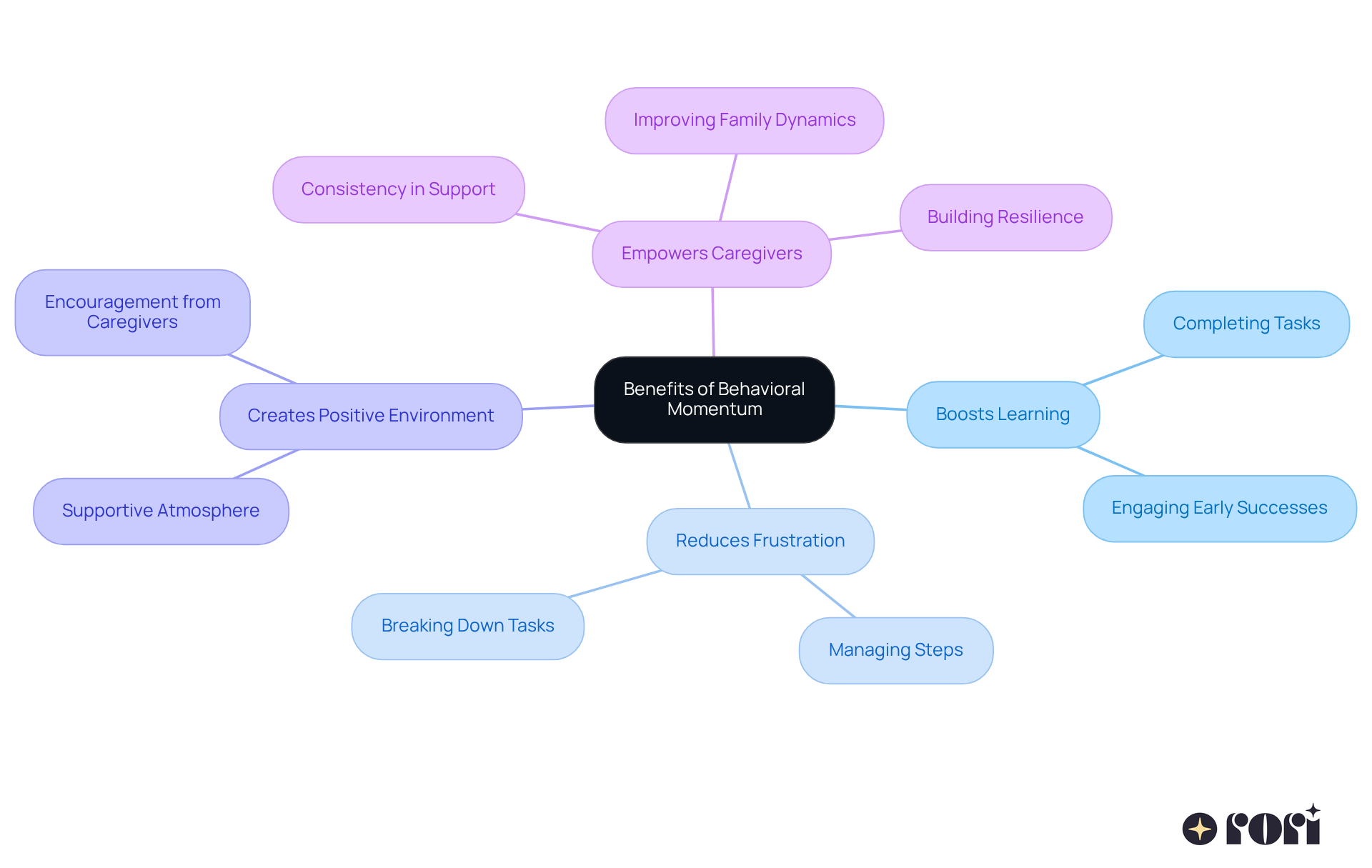
In real-world scenarios, a behavioral momentum ABA example demonstrates behavioral persistence in various therapy settings. For example, a therapist might kick off a session by asking a young person to do simple tasks like 'jump up and down' or 'spin around.' This fun approach helps build momentum, making the child more open to the next requests, like 'put your shoes on.' Caregivers, who gain a better grasp of ABA principles through education, can carry these strategies into the home, ensuring consistency and boosting support for their child's growth.
Another relatable situation involves a young student who feels hesitant about tackling homework. The therapist might start by encouraging the child to complete a few easy math problems, gradually moving on to more challenging ones. This gentle strategy not only nurtures compliance but also helps reduce resistance significantly.
Research shows that using high-probability request sequences can skyrocket compliance rates from an average baseline of 23% to an impressive 76% within just a week! These success rates highlight how effective behavioral progress can enhance engagement and motivation, especially in children with autism.
In a compelling case study, a 12-year-old boy with autism managed to reduce escape behaviors from 73% to 23% and boost session engagement from 27% to 84% by applying momentum-building strategies. These examples illustrate how starting with manageable activities can lead to greater involvement in more significant tasks, which is a clear demonstration of the behavioral momentum ABA example. As experts in the field remind us, 'Behavioral persistence is a vital element in behavior modification, helping the transition from simple to complex activities in various settings like counseling and education.' By empowering caregivers with knowledge and skills, we can enhance the overall effectiveness of ABA therapy, offering better support and informed decision-making that positively influences development. Let’s explore this together!
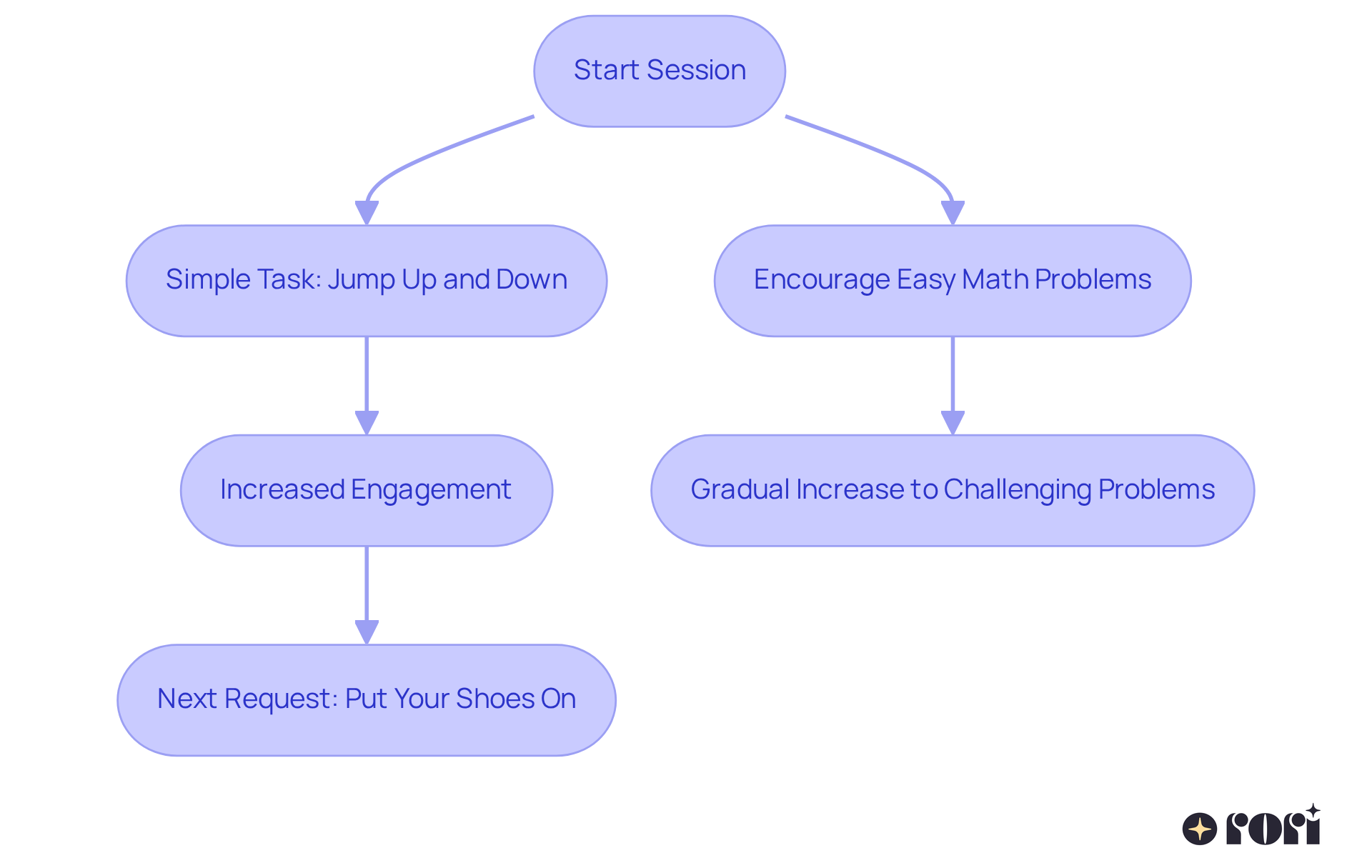
Implementing a behavioral momentum ABA example can be a bit tricky, especially when it comes to picking the right high-probability tasks that truly engage your child. Caregivers like you play such an important role in this process! Your understanding of ABA principles can really make a difference in helping your child stay engaged. 😊
But here’s the thing: if reinforcement isn’t consistent, it can really throw a wrench in the works. That’s why it’s crucial for therapists to keep a close eye on how your child responds and to adjust their approach as needed. For instance, if your little one seems uninterested in the first few tasks, the therapist might need to rethink their strategy and choose activities that resonate better with your child’s interests. And remember, you can provide valuable insights based on what you observe at home!
This teamwork between caregivers and therapists can significantly boost the effectiveness of the treatment. So, let’s explore this together and find the best ways to support your child’s journey! We’re here to help you every step of the way!
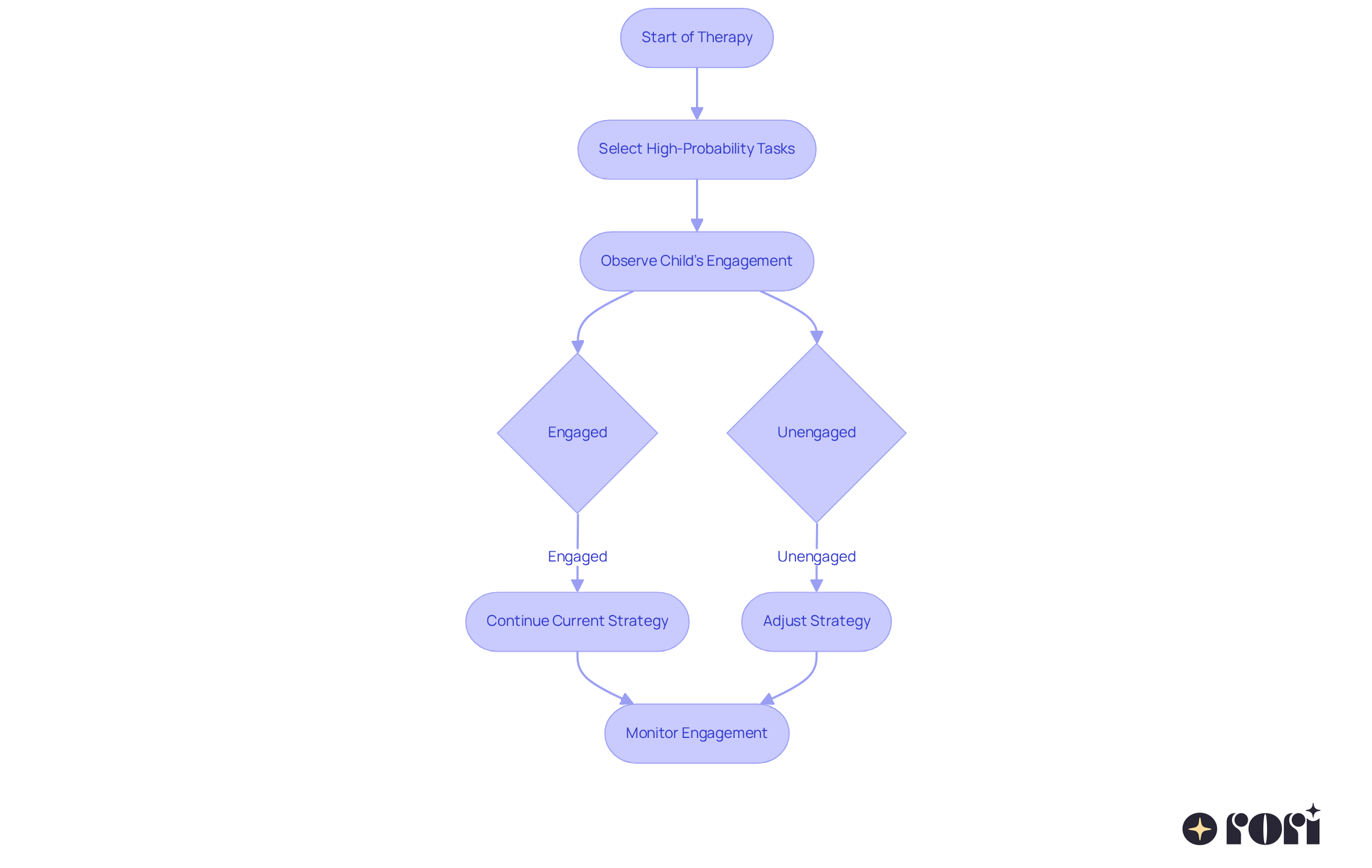
Gathering data is super important when it comes to understanding how effective behavioral momentum ABA example strategies are in treatment. Our automated data gathering system makes it easy for therapists to document sessions without interrupting the flow of treatment. This means they can keep an eye on how well a young person is doing with both high- and low-probability activities. Plus, all this data is stored securely, anonymized, and deleted after analysis to ensure confidentiality while also providing valuable insights.
Did you know that many young individuals can show compliance rates of up to 90% with high-probability activities? This really boosts their overall involvement and success in treatment! With this information, therapists can quickly adjust therapy plans to make sure the strategies are effective and tailored to each individual's unique needs. For example, if a young person struggles with a specific task, the therapist can adjust the strategy or use a behavioral momentum ABA example by introducing more high-probability tasks to keep things moving forward.
By using these data-driven insights, therapists can create even better treatment plans, making the therapeutic environment more effective and responsive. Parents can play a big role in this process too! By chatting with their child's therapist about compliance tracking and asking for regular updates on progress, they can help ensure that everything aligns with the personalized goals set for their child. Let’s explore this together and see how we can support your child's journey!
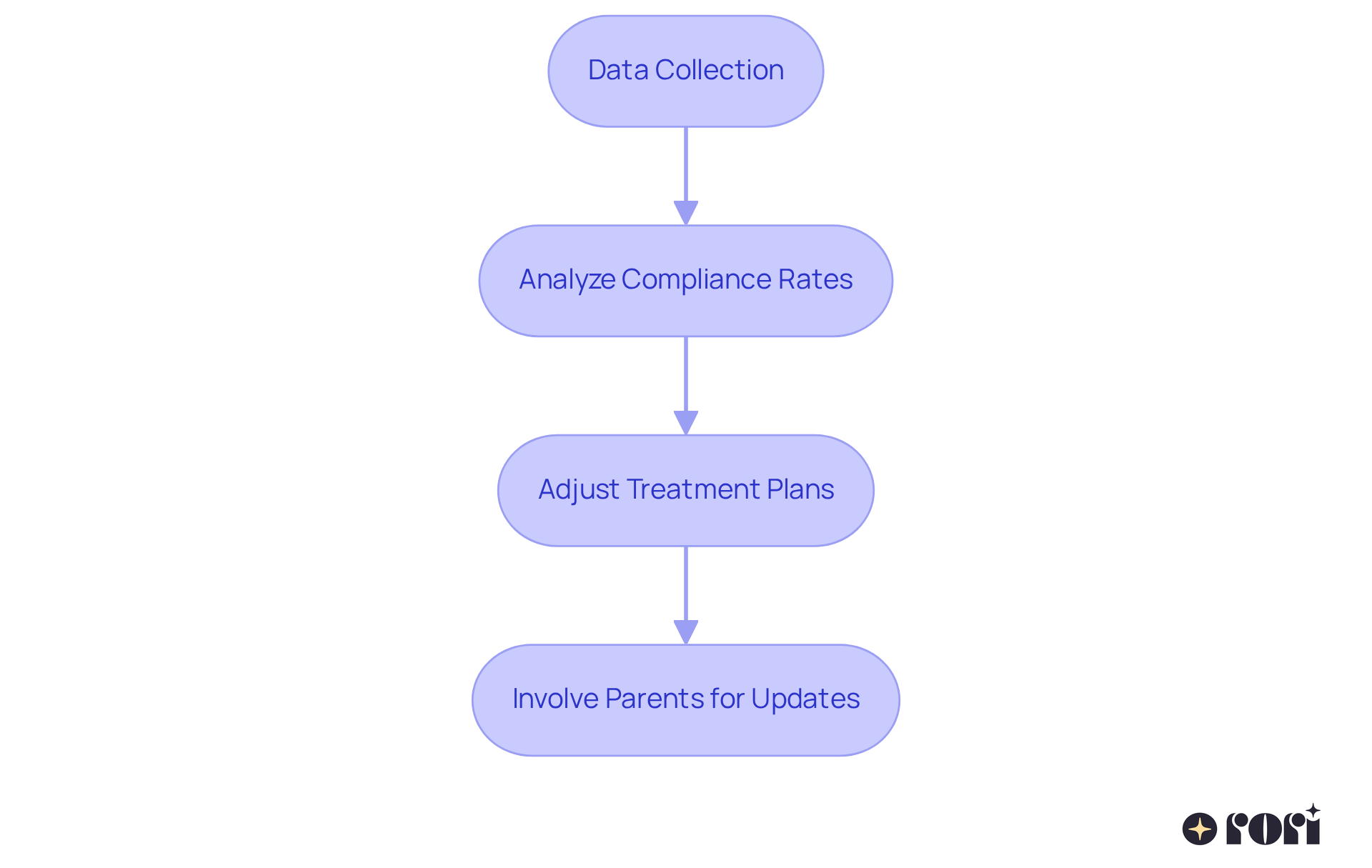
Parent involvement is crucial for reinforcing behavioral momentum ABA example strategies at home! 😊 Parents can use helpful techniques like visual schedules, first-then statements, and positive reinforcement to create a supportive atmosphere for their kids. For instance, a behavioral momentum ABA example can be seen when a parent uses a visual chart to outline daily tasks, starting with easier activities before moving on to more challenging ones. This approach not only helps maintain progress but also allows parents to actively engage in their children's learning journey.
By participating in their children's treatment and understanding ABA principles, caregivers can make informed choices that positively impact their kids' development. This leads to better behavioral outcomes and improved family dynamics. Let’s explore this together! We’re here to help you every step of the way!
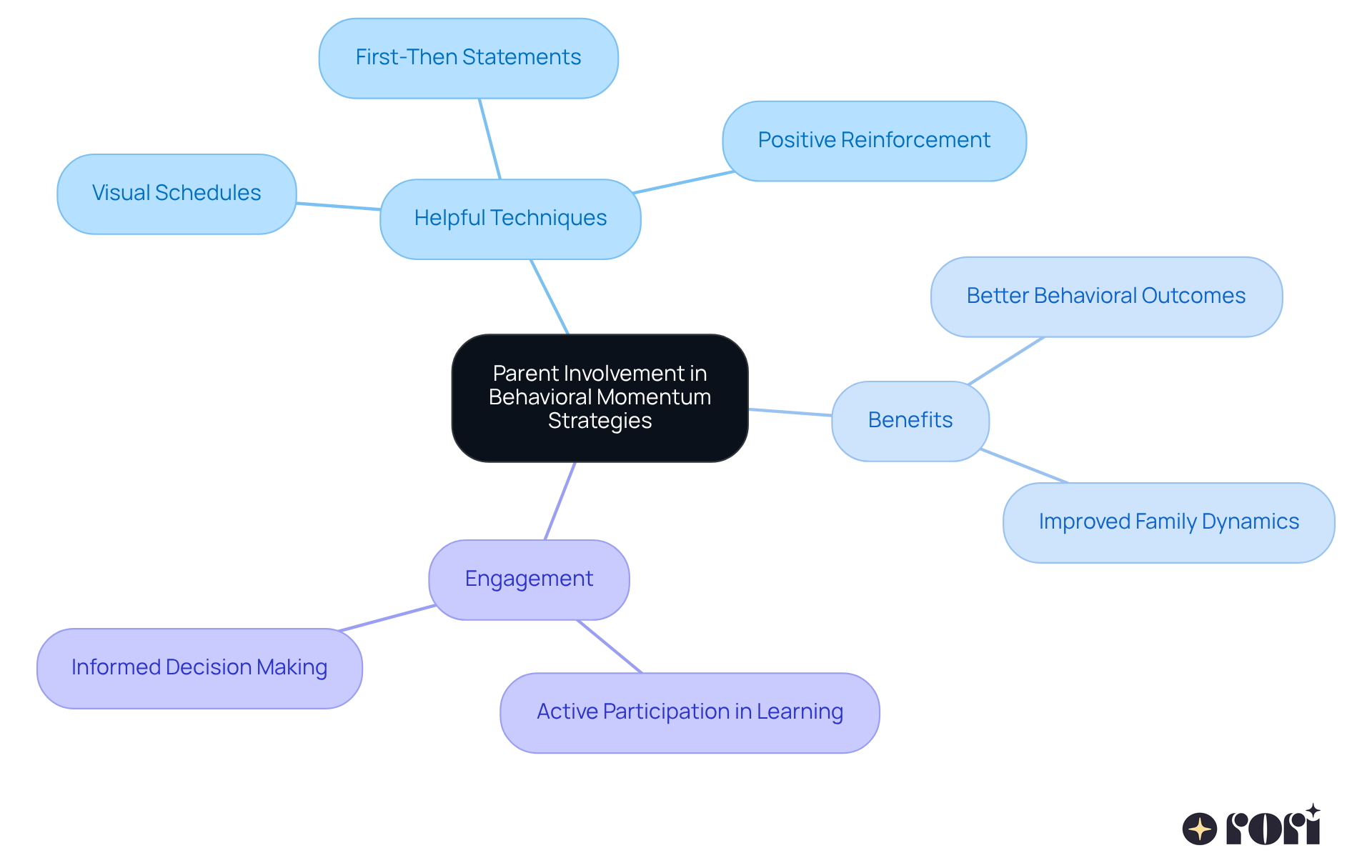
The future of behavioral momentum ABA example in treatment looks bright! 🌟 With ongoing research and exciting advancements in technology, we're seeing improvements that really enhance how it's applied. For instance, AI-driven progress report automation is empowering therapists with deeper insights into a young person's development, which means more personalized interventions can be created just for them.
At Rori Care, we're on a mission to revolutionize ABA therapy, making it not only more accessible but also empowering for families. This integration not only boosts the efficiency of behavioral strategies but also frees up 50% more time for youth treatment! Imagine the possibilities!
Moreover, blending behavioral drive with other evidence-based practices could lead to more comprehensive treatment plans that truly address the diverse needs of children with autism. As we move forward, it's crucial for therapists, families, and researchers to collaborate closely. Together, we can maximize the effectiveness of behavioral momentum ABA example strategies. Let’s explore this journey together! We’re here to help you every step of the way!
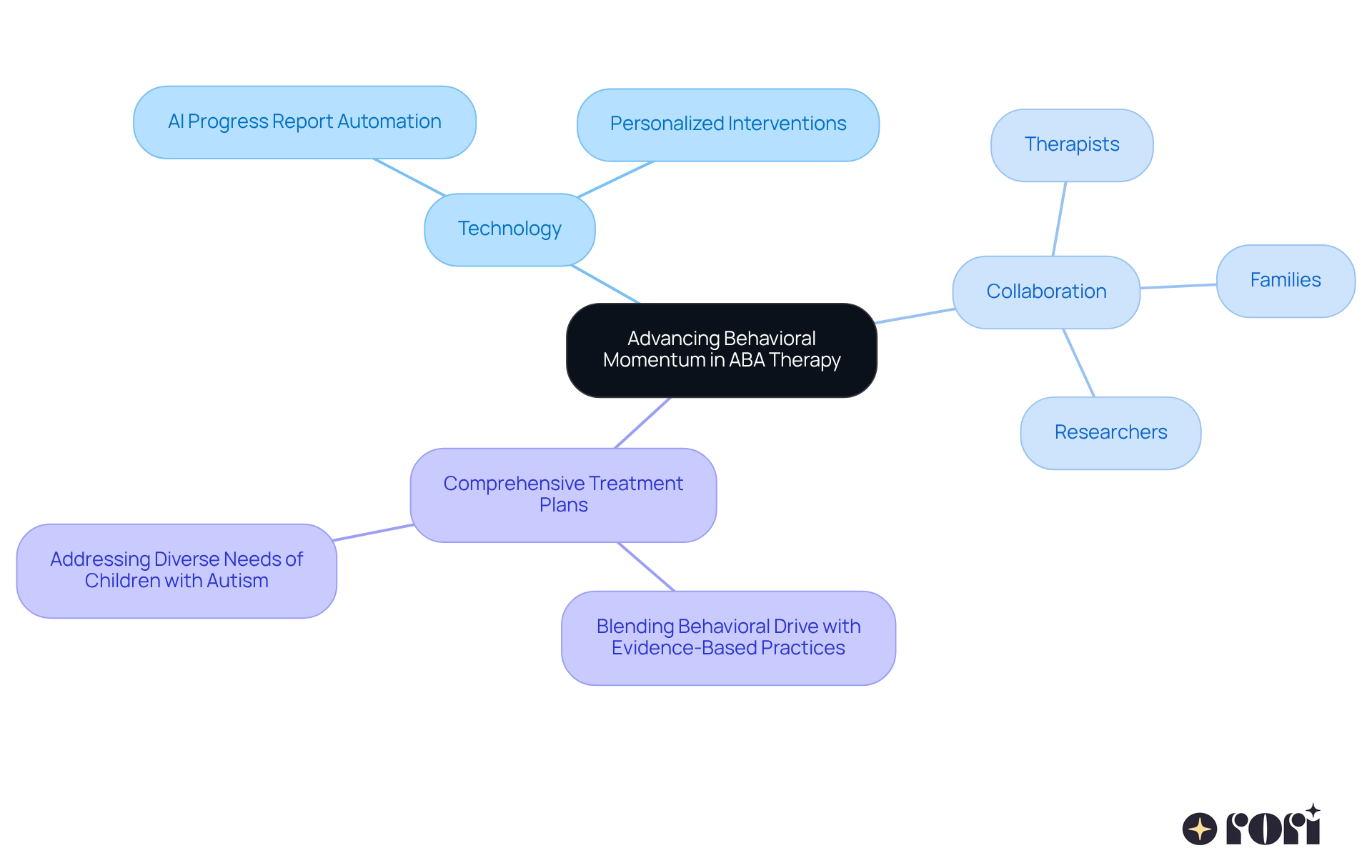
Utilizing behavioral momentum in ABA therapy offers a transformative approach to enhancing skill acquisition and engagement among children with autism. By starting sessions with simple, high-probability tasks, therapists create an environment that fosters confidence and readiness to tackle more complex challenges. This method not only boosts compliance but also significantly improves overall therapy success, as shown by research and real-world applications.
The article highlights several key strategies, like:
Each of these elements helps build momentum, making the learning process smoother and more enjoyable for children. When parents actively participate and apply ABA principles at home, they reinforce these strategies, leading to better behavioral outcomes and improved family dynamics.
As ABA therapy continues to evolve, embracing behavioral momentum can pave the way for more effective interventions. Collaboration between therapists and families is essential in maximizing the benefits of these strategies. By staying informed and engaged, caregivers can play a pivotal role in their child's development, ensuring that the progress made in therapy translates into lasting skills and behaviors. The future of behavioral momentum in ABA therapy looks bright, with advancements that will further enhance treatment effectiveness and accessibility for all families. Let’s explore this together!
What is Rori Care's approach to ABA therapy?
Rori Care utilizes behavioral momentum by starting each session with simple, high-probability activities to help individuals with autism acquire new skills effectively. This method boosts confidence and engagement, laying a foundation for learning more complex skills.
How does behavioral momentum improve skill acquisition?
Behavioral momentum improves skill acquisition by allowing children to experience success with easier tasks first, which increases their willingness to tackle more challenging tasks. This leads to higher engagement rates and better overall development.
What percentage of Board Certified Behavior Analysts use behavioral momentum?
Approximately 92% of Board Certified Behavior Analysts utilize a behavioral momentum approach in their practice, highlighting its effectiveness.
Why is parental involvement important in ABA therapy?
Parental involvement is crucial because when caregivers understand ABA principles, they can provide better support at home, enhancing professional interventions and creating consistency in the child's learning.
What are high-probability request sequences?
High-probability request sequences involve presenting a series of simple, easily achievable activities before introducing more challenging tasks, which boosts compliance and engagement among individuals with autism.
How do high-probability tasks affect engagement levels?
Research shows that incorporating high-probability tasks leads to better engagement levels and increased adherence among individuals with autism spectrum disorder, making them more open to challenges.
What is sequential task presentation in ABA therapy?
Sequential task presentation involves organizing activities step-by-step, allowing learners to master each part before moving on to the next, which clarifies expectations and enhances learning.
How do therapists ensure the effectiveness of sequential task presentation?
Therapists create adaptive treatment plans tailored to each individual's unique needs, continuously evaluating and adjusting strategies based on the learner's progress.
What role do caregivers play in the learning process?
Caregivers actively participate in the learning process, creating a collaborative environment that enhances the child's experience and allows for personalized support and progress tracking.